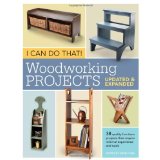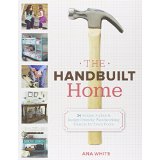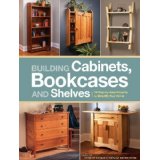Ultimate Guide to Baltic Birch Plywood:
Why It’s Better, When to Use It
Over the last few months, I’ve whittled up a healthy number of Baltic birch sheets to build a wide array of projects. A router table and fence, several drawer boxes, a craft table. In the same months, I’ve seen my colleagues use Baltic birch to make a table saw cross cut sled, a glue rack, a bookcase. The uses for Baltic birch are seemingly endless and the reasons why become apparent when you see what makes Baltic birch unique.
To start, Baltic birch is a plywood product native to the northeastern region of Europe around the Baltic Sea. It’s manufactured for European cabinetmaking. This begins to explain the product’s odd sheet size of 5’x5′ (more about this at bottom).
But here is the more important part. Baltic birch’s core is unlike traditional plywood you may be used to seeing: the layers of inner plies are 1.5 mm-thick solid birch veneer, cross-banded, and laminated with exterior grade adhesive. It’s a recipe that results in a void-free core with a number of advantages, which is why in the U.S. we’ve discovered that the material is fantastic for thousands of projects in woodworking.
Why Baltic Birch Is a Preferable Plywood:
1. Superior Screw Holding
Because the core layers of Baltic birch are actually veneers of birch (rather than a softer, secondary wood) and form a void-free core, screws bite and hold with 100% of their threads. Conversely, traditional veneer core plywood has voids and is also made up of softer materials so screws don’t get a chance to clench the best they can. You also might find sheet goods made with MDF (medium-density fiberboard) core, and though it’s 100% solid, MDF is soft and just doesn’t have the screw-holding power of Baltic birch.
2. Cleaner Joinery
Tipping the hat once again to the uniform birch veneer layers of the core, you’ll get clean dadoes, rabbets, dovetails, miters, and fingers for strong and, when appropriate, great looking joints. Because the core is free of voids, your joinery also won’t suffer from glue starvation—they’ll get 100% glue coverage. Anything you build out of Baltic birch should last a good, long time.
3. Improved Strength and Stability
All plywood runs the risk of warping, and the most common type of warp in plywood is bowing. Baltic birch is not immune, it’s still a wood product. However, Baltic birch has the odds stacked in its favor much better than other plywood, chiefly in 1/2″ and 3/4″ thickness. The cross-banded layers of 1.5 mm thick birch veneer makes the sheets balanced, which promises a flatter product. However the thinner sheets, like 1/8″ and 1/4″, simply will not remain flat in large pieces—and this is no surprise. That’s usually not a problem though because these are usually used in applications like drawer bottoms and cabinet backs where they’re cut down to smaller sizes or captured in dadoes and rabbets. It should be obvious that the thicker sheets are more stable because they have more plies. 3/4″ Baltic birch in particular won’t change much in width or length, that’s why it’s great for jigs and fixtures that need to maintain accuracy over the years
4. Attractive Appearance
One of the fortunate benefits to Baltic birch, too, is that you can leave the edges exposed if you like the look. Because the core is free of voids and all birch, the exposed edges sometimes have an appearance that works for the project, and this saves you time and material—no need to spend time and effort on applying edge tape or solid edge banding unless you want to. Simply sand and finish the edges as they are. The face and back can be stained when you need a different color. Like solid birch lumber, for it to stain evenly with an oil based pigment stain you’ll need to apply a stain controller or a wash coat of de-waxed shellac. Otherwise use dye for even color. To keep the uniform, light color instead, simply finish Baltic birch with a basic clear top coat of lacquer or polyurethane.
5. Thicker Face Veneer with Reasonable Quality
With close inspection of Baltic birch, you should notice that the face and back veneers are remarkably thicker than the veneers you’ll see on traditional cabinet-grade plywood. Sadly, it’s well-known that cabinet grade plywood veneer faces are dismally thin, which makes them easy to damage and easy to sand through. But not so with Baltic birch. Outer veneers are nice and thick. As for the appearance, there are several grades of Baltic birch available, but we most often carry the highest grade which is B/BB. Plywood has two sides a face and a back—meaning one side is going to be better than the other, and they’re graded separately. B is the grade of Baltic birch’s face, or the best side. It’s a whole-piece face with no splices, has a light and uniform color, and there are no patches, mineral streaks, knots or voids. The back side is graded BB and slightly less attractive. There can be up to 6 color-matched “football” patches (about the size of a large egg), mineral streaks and small-but-sound dime-sized pin knots.
General Baltic Birch Grades:
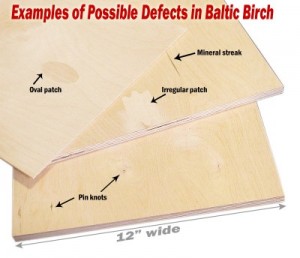
Note: plywood is graded on the appearance of the face veneers, grade does not imply any sort of quality of the core. And plywood grade makes consideration for both sides. The better side is called the face, the poorer side is called the back. In a vast majority of projects, only one side is visible. These grades read face-slash-back.
B/BB: Single piece face and back veneer. Face veneers are considered clear and free of defects with a light-uniform color. Back allows 3-6 color matched patches, which are oval in shape and egg sized. Inner cores are solid birch single piece veneers.
BB/BB: Single piece face and back. Both face and back veneers allow 3-6 small color-matched patches on average and some light mineral streaks. Tight pin knots may be present. Inner cores are solid single piece veneers.
BB/CP: Single piece face and back. The “CP” back veneers are downgraded from “BB” grade veneers, which allow for unlimited patches and sound knots, but does not allow for open defects. Inner cores are solid birch single piece veneers.
CP/CP: Single piece face and back. Face and back grade veneers allow unlimited sound knots and repaired splits and unlimited patches. The panel is sound both sides and designed for laminating.
C/C: Patches, open knots, and small veneer splits allowed. Veneer lap and small core voids permitted. This panel is not sanded and would be used for structural purposes.
Projects and Uses for Baltic Birch Are Endless
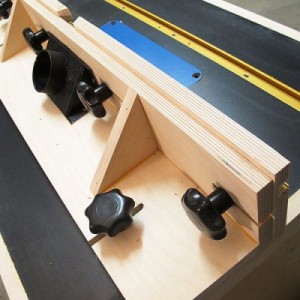
Take advantage of Baltic birch’s superior stability for making your own table saw sleds, tool cabinets, clamp racks, work tables, tool stands, auxiliary fences, router jigs (above), push sticks, etc. Baltic birch has fantastic dimensional stability that makes it great for these items.
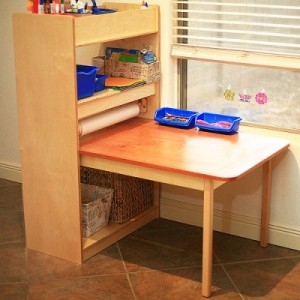
Baltic birch has a nice appearance for certain types of furniture as well. Casework, cabinets, drawer boxes, children’s furniture (above), craft tables, and shelves are just a few options.
Baltic birch is a good choice for cabinets that go under sinks because of the exterior grade adhesive it’s laminated with. If you ever have a plumbing leak, there’s little worry that the cabinet will be destroyed. Conversely cabinets that are made with particle board (which is common today) will easily foster mold if they get wet.
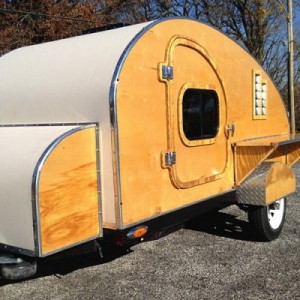
Baltic birch has numerous special applications, too. Custom speaker boxes, skateboards, teardrop trailer shells (above), scroll saw art, forms, CNC furniture parts, laser engraving, signage, etc. We may never be able to list all of the uses.
About Baltic Birch Sizes
Sheets are most often manufactured in 5’x5′ sheets for the European cabinetry market—so the actual size is metric, 1525 mm x 1525 mm. In fine woodworking, it rarely matters because you’re going to cut pieces to the sizes you need for much smaller items like jigs and furniture parts, custom sized cabinets, etc.
The thickness is also in millimeters, but the U.S. market translates the thickness to the nearest Imperial value for simplicity. That means, for example, 3/4″ Baltic birch is not precisely 3/4″ thick, but slightly thinner at actually 18 mm thick. Be aware of this when planning and cutting your joinery—like in other aspects of woodworking, never assume a precise dimension without checking it first, and cut your joints for fit rather than size.
- 3 mm ≈ 1/8″ (3 plies)
- 6 mm ≈ 1/4″ (5 plies)
- 9 mm ≈ 3/8″ (7 plies)
- 12 mm ≈ 1/2″ (9 plies)
- 18 mm ≈ 3/4″ (13 plies)
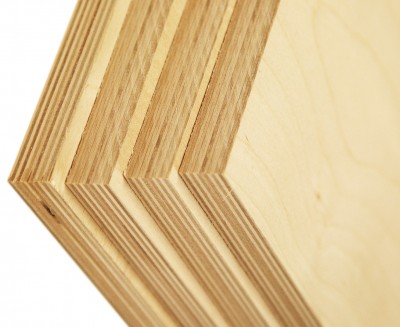
Baltic birch plywood is unique because of it’s all-birch veneer core that’s cross-banded and laminated with exterior grade glue, making for a superior stable sheet. It also has a thicker face veneer than traditional cabinet grade plywood.
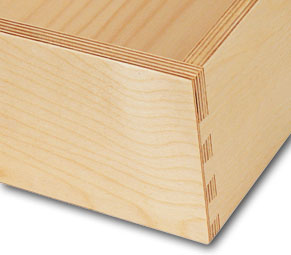
Solid joinery like half-blind dovetail joints are not only possible with Baltic birch, but they look good too.
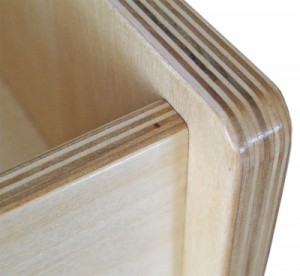
Baltic birch edges don’t look too bad when shaped, sanded and finished.
Copyright TedsWoodworking.com All Rights Reserved.
Privacy - Terms - Anti-Spam - DMCA - Affiliates






